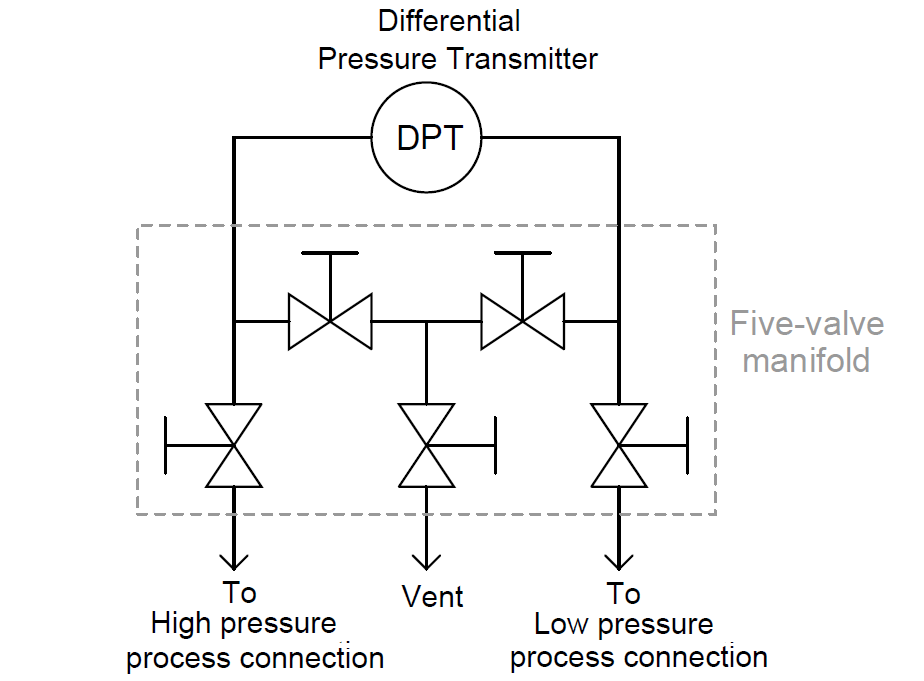Some differential pressure transmitters are equipped with 5 way valve manifolds. These valve networks allow for blocking, equalizing, and bleeding of the transmitter’s two pressure ports, the valves being arranged in this pattern:
Differential Pressure Transmitter

5 Way Manifold Valve
Shown using standard P&ID symbols – instrumentation equivalent of an electrical schematic diagram – the transmitter and manifold arrangement looks like this:

Identify the normal, operating valve positions (open/closed) for a five-valve manifold. Describe the proper sequence of manifold valve operation to successfully prepare the transmitter for removal from the process.
Why do you think we have such things as 5-valve manifolds? What can be done with this manifold that cannot be done with a three-valve manifold?
Answer:
Normal valve positions:
- Both block valves open.
- Both equalizing valves closed.
- Vent valve closed.
Removing differential pressure transmitter from service:
- Close one block valve.
- Open both equalizing valves (which one first does not matter).
- Close the other block valve.
- Open the vent valve.
- Tag all valves, notifying of transmitter’s planned return time/date.
- Disconnect the transmitter from the manifold.
Restoring the transmitter back to service is as simple as reversing all the steps taken to remove it from service (i.e. go through the list backwards, doing the reverse of each instruction).
Difference between 5-valve manifold and 3-valve manifold?
One feature that 5-valve manifolds provide over 3-valve manifolds is the ability to route a vent tube to a remote (safer) location, for use with particularly hazardous process fluids.
5-valve manifolds allow for in-place transmitter calibration, provided one of the ∆P transmitter’s sides has an atmospheric vent. By connecting the calibrating pressure source to the vent line, one can route the calibrating pressure to either side of the transmitter (only), while keeping the other side vented.
Share your answers with us through below comments section.
Read Next:
- Instrument Hook Up Diagram
- Instrumentation and Control MCQ
- Pressure Gauge Datasheet
- Temperature Controller Problem
- Pressure Measurement MCQ
Credits: Tony R. Kuphaldt
Dear sir,
How to calibrate or zeroing of DPT with 5-way manifold.